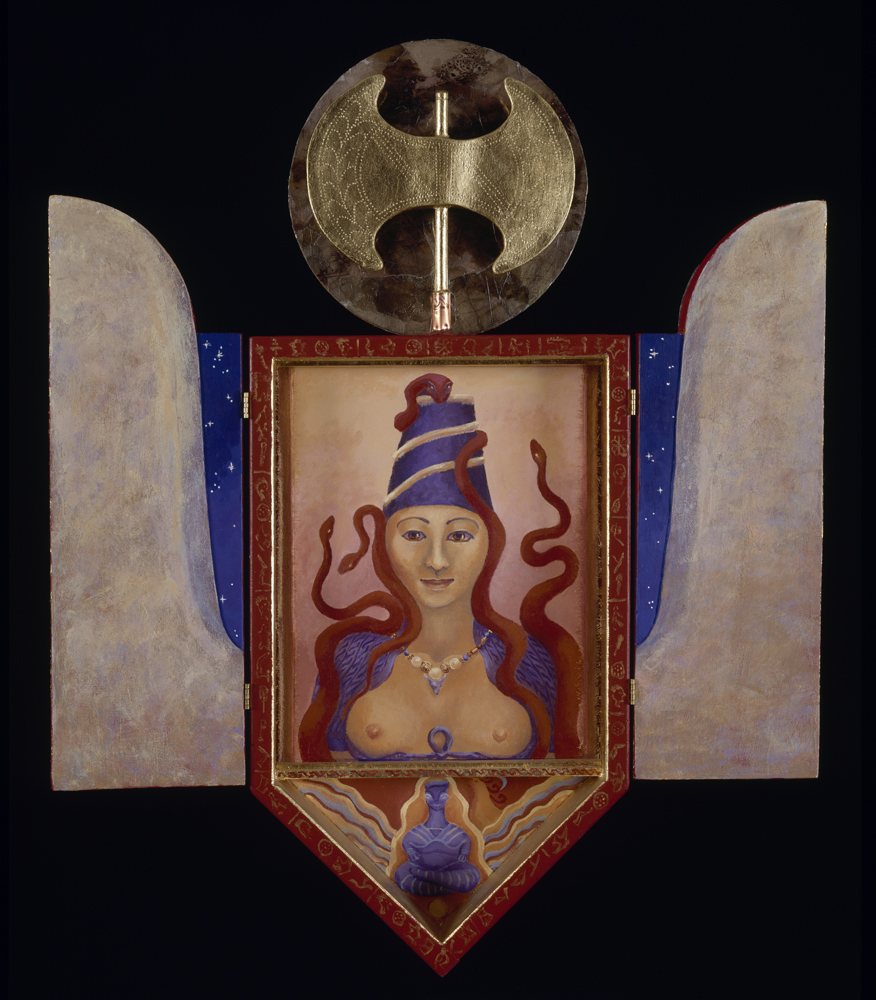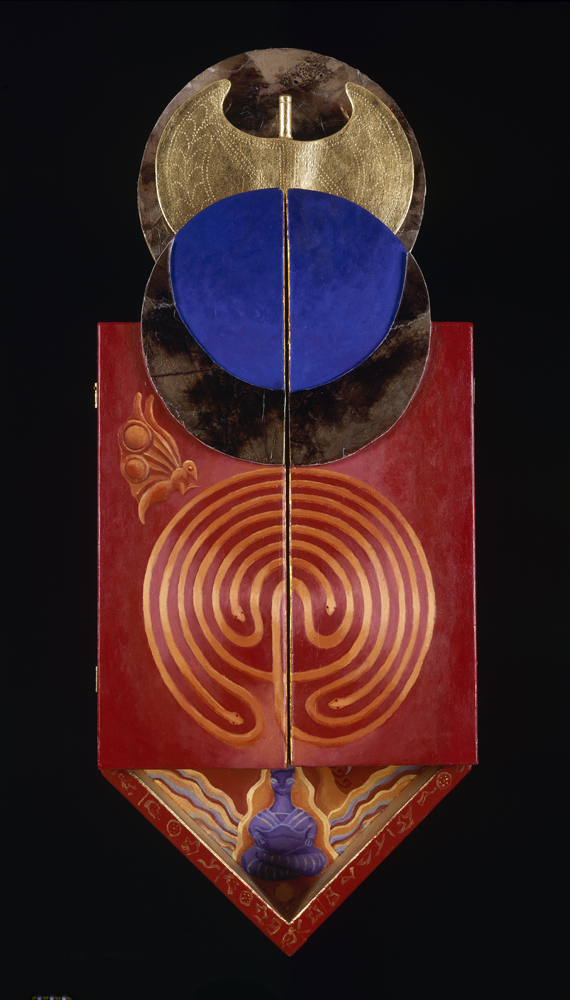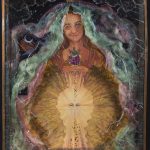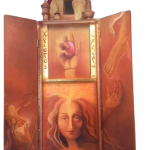Crete:
Moonrise Over the Horns of Consecration

Crete
Moonrise Over the Horns of Consecration
With doors closed.

The ancient Minoan civilization flourished on Crete until about 1500 BCE. Minoan art has inspired me since I researched it for a class presentation when I was 16. I was astonished to discover a time and place in which art, music, and dance were a part of everyday life and worship. One can almost hear the music as one beholds the ancient frescos of dancers in ritual procession, dressed in richly decorated garments, surrounded by gloriously depicted abundant plant and animal life. The exuberant paintings on the bowls, jars, and cups are notable in their diversity. No two are alike. Based on findings of Minoan artifacts in other Mediterranean cultures, we can surmise that the uniquely beautiful art created by this diverse culture was traded widely. The symbols depicted on the artifacts and architectural remains are mysterious and compelling. The double axes, or labyris, were crafted of pure gold, obviously neither weapons or workaday tools. The labyris shape can be seen reflected in the shining labyrinth. The wings of the axe evoke, for some, the butterfly, or perhaps the multi-phased, ever changing moon. In the center panel of the inner triptych, I painted the Snake Priestess, turning clay to flesh for the priestess and her serpent companions, inspired by an ancient clay statue in the Heraklion Museum. In the Throne Room, I painted a much more ancient Serpent Deity from Crete on the curving alabaster throne, next to the fanciful birds from the wall paintings—the bird and snake together in balanced importance. The priestess wears a necklace bejeweled with the three days of the moon’s fullness, and the head of the Bull god, Minos. I created this piece after a journey to Crete, musing on the intersecting symbols of this mysterious culture. The symbols surrounding the central panel are the characters, or letters, from the never yet translated Phaistos Disc. I wonder what they say?

